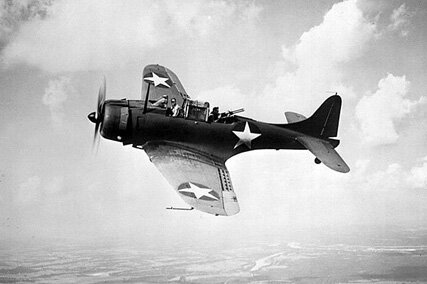U.S.S. Enterprise (CV-6) Air Group ‘Radio Condition BAKER - Limited Transmitting To Aid Lost Plane’ Information Sheet - Lt. Moore










U.S.S. Enterprise (CV-6) Air Group ‘Radio Condition BAKER - Limited Transmitting To Aid Lost Plane’ Information Sheet - Lt. Moore
Size: 8 x 8 inches
Letter of Authenticity included.
This rare World War II ‘Radio Condition BAKER - Limited Transmitting To Aid Lost Plane’ information sheet was carried and used by Lt. Moore who served as an American pilot on the USS Enterprise (CV-6) Air Group. This lost plane procedures sheet classified under condition baker was a step-by-step guide for USS Enterprise pilots on how to re-establish contact with the ship, circling procedures, radio frequencies, and landing guidelines . This sheet was carried by Lt. Moore as U.S. aircraft patrols and search and destroy missions were conducted by the USS Enterprise (CV-6) and its Air Group during the USS Enterprise and its air group supported U.S. and Allied efforts against the Japanese. Carrier pilots during World War II got lost for all types of reasons, however, re-establishing contact and safe identification with their mother ship was extremely crucial. This is the exact list that would have been carried by every single one of the USS Enterprise (CV-6) Air Group pilots and crew.
Comprehensive WWII combat history of USS Enterprise (CV-6):
The Yorktown class aircraft carrier, USS Enterprise (CV-6) was commissioned at Newport News, Virginia, on May 12, 1938. Relocating to the Pacific, she was at sea during the Japanese Attack on Pearl Harbor on December 7, 1941. Three days after, she became the first U.S. Navy warship to sink a Japanese warship, submarine I-70, and later that month participated in the Wake Island expedition. In April, Enterprise covered the Dootlittle Raid on Japan and participated in the Battle of Midway that June, where her planes helped sink three Japanese aircraft carriers and a cruiser. During the Guadalcanal Campaign, she covered the landings and participated in the battles of Eastern Solomons and Santa Cruz Islands. Despite being damaged in both battles, she launched aircraft to assist the ships involved in the Naval Battle of Guadalcanal. In late 1943 and early 1944, Enterprise took part in the Gilberts and Marshall invasions and air attacks on the Japanese in the Central and Southern Pacific. In the summer of 1944, she participated in the Marianas operation and the Battle of the Philippine Sea, followed with the largest naval battle in history, the Battle of Leyte Gulf in October.In February 1945, Enterprise took part in the Iwo Jima invasion, then raids on the Japanese home islands and the Okinawa campaign in April. Due to damage received by two kamikaze attacks in April and May, she returned to the United States with the distinction of being the most decorated U.S. Navy warship during the war. Following Japan's surrender, she helped transport U.S. servicemen back to the United States. Decommissioned in February 1947, Enterprise was re-designated (CVA-6) in October 1952 and then to (CVS-6) in August 1953. Despite efforts to turn her into a museum ship, she was sold for scrapping in July 1958.